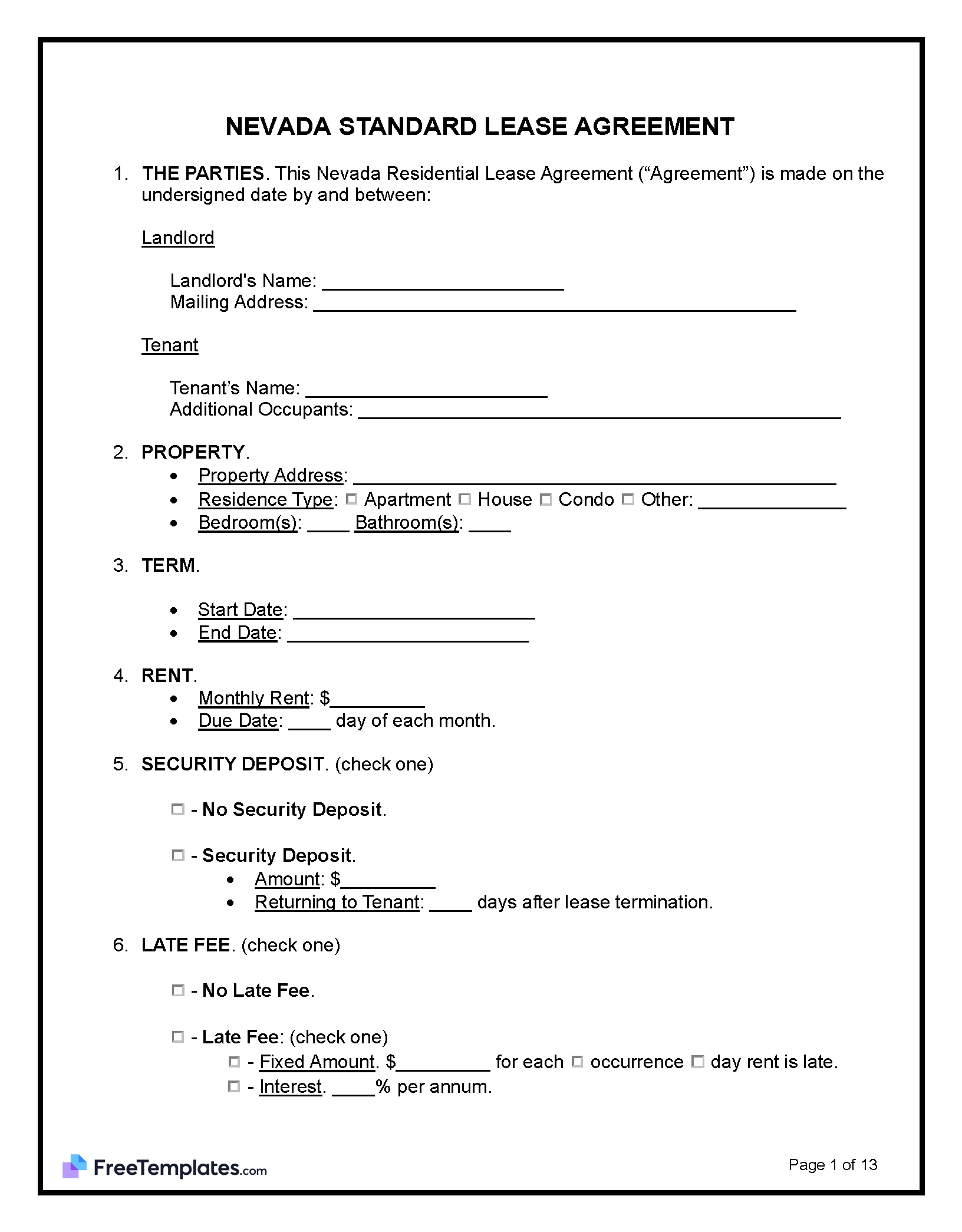Disclosures
Foreclosure – If there are any foreseen foreclosures on the property, then the landlord must disclose this information. (§ 118A.275(1))
Inventory and Condition of Premises – The landlord is responsible for providing the tenant with a signed inventory list and property condition report. (§ 118A.200.3(k))
Lead-Based Paint Disclosure – Any renter must be given a lead paint disclosure if dwelling in a property built before 1978. (EPA/HUD Fact Sheet)
Rent Grace Period
Security Deposit
Maximum Amount – A combined total of three months’ rent is the maximum amount a landlord may charge for a security deposit. (NRS 118A.242(1))
Returning – The security deposit must be returned to the tenant within 30 days of the end of the tenancy. (NRS 118A.242(4))
- Deductions – The landlord must provide a list showing any deductions made to the security deposit. (NRS 118A.242(4))

